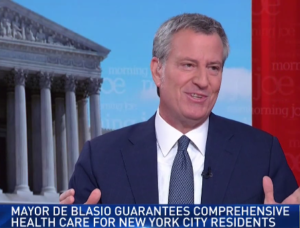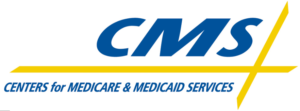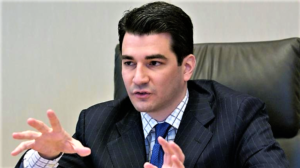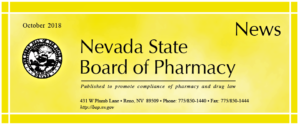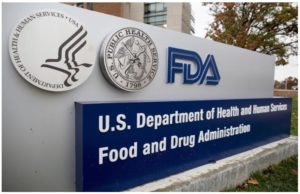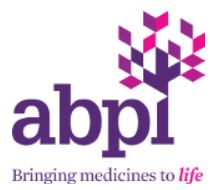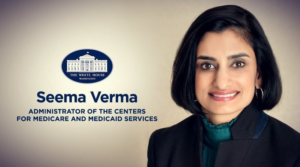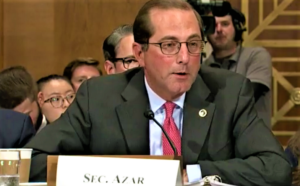- De Blasio Unveils Health Care Plan for Undocumented and Low-Income New Yorkers (nytimes.com)
New York City will spend at least $100 million to ensure that undocumented immigrants and others who cannot qualify for insurance can receive medical treatment, Mayor Bill de Blasio announced on Tuesday morning...The mayor’s office was quick to say that its plan, to be called NYC Care, would not be a substitute for any universal health care at the state level or a national single-payer plan. But, aides said, it was something the city could do immediately and on its own, and not require approval from the State Legislature...The NYC Care plan would improve that coverage, which already insures some 516,000 people, and aim to reach more of those who are eligible, such as the young and uninsured, and others who qualify but have not applied...It would also provide direct city spending, about $100 million per year when fully implemented, on those without insurance, including undocumented immigrants, who already can receive care at the emergency rooms of city-run hospitals...Details of how those seeking care could do so under the new plan were not immediately clear...
- CMS finalizes site neutral payment rule (healthcarefinancenews.com)
The Centers for Medicare and Medicaid Services has finalized site neutral payments in the hospital outpatient prospective payment system and ambulatory surgical center payment system rule...CMS is using site neutral payments to level the playing field between what physician offices and hospital outpatient departments are paid for certain clinical visits...In addition...CMS is expanding its 340B policy by extending the payment change to additional off-campus provider-based hospital outpatient departments that are paid under the physician fee schedule...Today's rule advances competition...for providers so they can compete for patients on the basis of quality and care...The final policies remove unnecessary and inefficient payment differences so patients can have more affordable choices and options.
- Advancing Toward the Goal of Global Approval for Generic Drugs: FDA Proposes Critical First Steps to Harmonize the Global Scientific and Technical Standards for Generic Drugs (fda.gov)
...FDA launched a Drug Competition Action Plan that focuses on three key areas designed to facilitate more generic competition, promote patient access, and improve the economics of developing generic medicines...While we’ve made substantial progress in fostering more competition by resolving obstacles that can make it difficult to win approval of generic versions of certain complex drugs, increasing the speed of generic approvals, and closing down ways that branded companies game the system to prolong drug monopolies, there’s still more work to be done...So we’re opening up some new policy fronts when it comes to our Drug Competition Action Plan. And we’re re-launching that plan for 2019 with some additional initiatives. Chief among them is a new effort that FDA has proposed to the International Council for Harmonization of Technical Requirements for Pharmaceuticals for Human Use (ICH), a key international body comprised of other regulatory authorities and the pharmaceutical industry: The pursuit of common global development standards for generic drugs...The ultimate goal of this global harmonization of scientific and technical requirements would be the attainment of a single global generic drug development program that can support simultaneous regulatory filings across multiple markets. Harmonization of these requirements is foundational to achieving a future goal of enabling global approval for high quality generic drugs.
- Nevada State Board of Pharmacy – Newsletter – October 2018 (bop.nv.gov)AB 474 (leg.state.nv.us)LCB File No. R047-18 (leg.state.nv.us)
- Assembly Bill 474
- National Pharmacy Compliance News
- FDA Issues Final Guidance Policy on Outsourcing Facilities
- EU-US Mutual Recognition Agreement Now Operational Between FDA and 12 Member States
- US Surgeon General Advisory Urges More Individuals to Carry Naloxone
- Expanding Pharmacists’ Scope of Practice Linked to Improved Cardiovascular Outcomes
- Pharmacists Are Critical to Drug Supply Chain Integrity, States FIP
- Emergency Department Visits for Opioid Overdoses Rose 30%
- FDA weighs legalizing interstate sales of cannabis-based CBD in food and drinks (cnbc.com)2018 Farm Bill Legalizes Industrial Hemp (natlawreview.com)
The Food and Drug Administration is looking for "pathways" to legalize the sale of CBD oil and other cannabis-based compounds in food and beverages in a move that could remove one of the last remaining legal hurdles for companies hoping to sell such products across state lines...FDA Commissioner Scott Gottlieb outlined steps the agency is considering in regulating cannabis products after President Donald Trump signed the farm bill into law on Thursday. The legislation — an $867 billion, five-year spending bill that funds agricultural, nutrition and other federal programs — also loosened some federal restrictions on cannabis. It legalized hemp by removing it from the Controlled Substances Act while preserving the FDA's authority to regulate the products...
- Trump administration unveils plan to lower Medicare Part B prices by basing costs on other countries’ pricing (fiercehealthcare.com)Trump administration faces uphill battle in convincing provider skeptics to back new drug pricing plan (fiercehealthcare.com)
President...Trump...announced a new payment model that would more closely align the cost of Medicare Part B drugs with the prices paid for the same drugs in other countries...As they unveiled the "International Pricing Index" model, federal health officials projected the proposal could save Medicare more than $17 billion over the course of a five-year pilot. The Centers for Medicare & Medicaid Services currently pays the average sales price plus 6% for Part B drugs, and in the new proposal would instead pay a target price based on international prices and look to alternatives for the add-on fee...Medicare currently pays about 180% more than other countries for drugs in Part B, which includes pharmaceuticals that are administered in a clinical setting, HHS Secretary Alex Azar said. Through the IPI model, HHS is looking to bring that figure down to 126%.
- 5 questions on the Trump admin’s bid to mandate prices in drug ads (biopharmadive.com)
The Trump administration took one of its more combative moves on drug pricing Monday, when Health and Human Services Secretary Alex Azar introduced a proposal requiring drugmakers to disclose list prices in television advertisements...The proposal sets up what is expected to be a confrontation between the drug industry and the federal government. It also raises a slate of legal, political and regulatory questions that will be debated in the coming months. Here are five of the most pressing, and what experts are saying about them:
- Can the administration actually do this?
- Would putting prices in TV ads actually help?
- Will PhRMA sue?
- Why did the Trump administration choose to make this a signature proposal?
- Which drugmakers would hate this most?
- UK vows to speed up drug review in return for 2% sales cap (in-pharmatechnologist.com)
UK government and ABPI have agreed a deal to limit branded drug sales growth to 2%, potentially reducing the cost of medicine by £930m ($1.18b)...The announcement was made after the UK government and the Association of the British Pharmaceutical Industry provisionally signed the Voluntary Scheme for Branded Medicines Pricing and Access...the two key details released are: branded medicines will be subject to a 2% cap on sales growth – with pharma companies repaying the NHS for sales over this limit – and appraisals of new technology applications by NICE will be completed up to six months faster than current timelines...
- CMS eyes Part D catastrophic coverage reforms that would shift risk to insurers (fiercehealthcare.com)
The Trump administration is looking for ways to change the Medicare Part D drug program that would shift more risk to plan sponsors when members reach the final catastrophic coverage stage...The catastrophic coverage tier of Part D kicks in when a member reaches $5,000 in out-of-pocket costs. At that point, patients pay a flat fee or 5% of the negotiated retail drug cost, and the federal government picks up 80% of the remaining costs and plan sponsors pay 15%...That could change. Catastrophic coverage under Part D was initially developed to encourage private insurers to participate, Centers for Medicare & Medicaid Services Administrator Seema Verma said...A lot has changed since then, and now it’s “one example where Part D could be updated or modernized.”...We’re at the point now where it would be better for Part D plans to manage that portion of the benefit,” she said. “That way we could bring competition and negation to that piece as well.”
- Azar deals woe to DTC—and a slap to Big Pharma—with vow to force prices into drug ads (fiercepharma.com)U.S. TV drug ads to carry information on prices (reuters.com)
Pharma might have thought it could fend off the Trump administration's bid to get drug prices into consumer advertising, but it was wrong...Even a last-ditch set of concessions—announced by PhRMA Monday morning—couldn't forestall HHS Secretary Alex Azar's own proposal Monday afternoon. The pharma plan was "a small step," Azar said, before saying he'd require DTC television ads to include the list price on all $35-and-up drugs covered by Medicare or Medicaid, which is essentially every drug in the pharmaceutical universe...And Azar didn't just counter. He took direct aim at the just-announced PhRMA idea.

